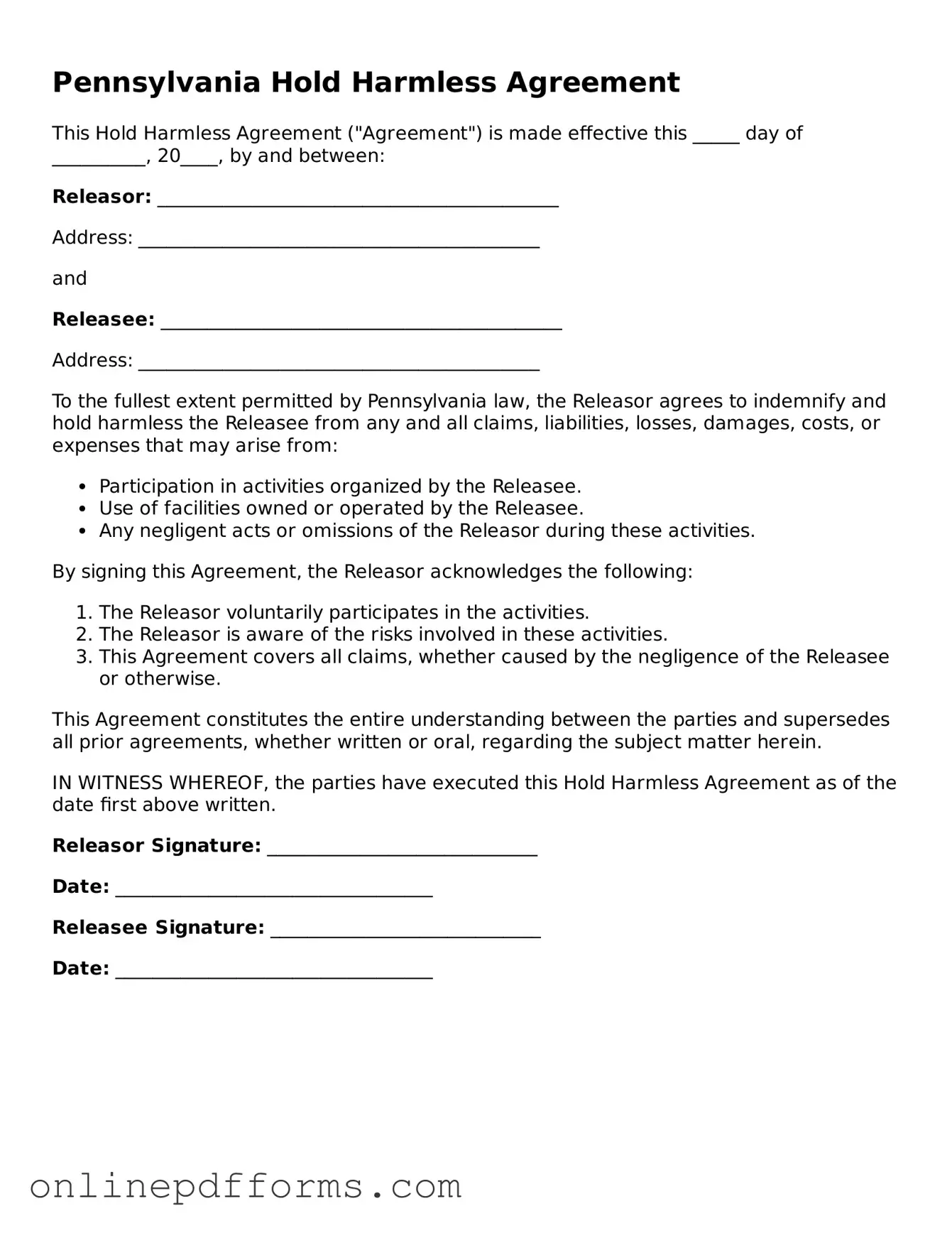Blank Pennsylvania Hold Harmless Agreement Form
The Pennsylvania Hold Harmless Agreement form is a legal document designed to protect one party from liability for certain risks associated with activities or events. By signing this agreement, individuals or organizations agree to assume responsibility for any injuries or damages that may occur. To ensure proper protection, it is essential to fill out the form accurately; click the button below to get started.
Open Hold Harmless Agreement Editor Now
